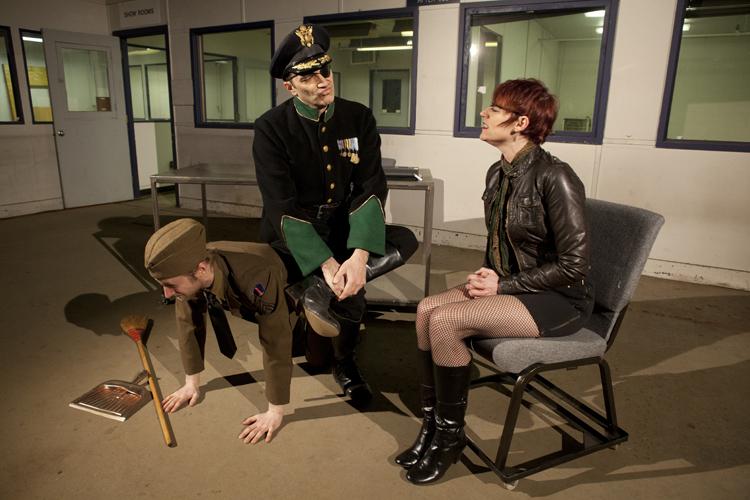‘Pantagleize’: Quantum Theatre’s latest unorthodox production
April 9, 2014
A dilapidated and vast office building that’s falling apart might not seem like an ideal place to stage an uprising, but Quantum Theatre’s latest production, “Pantagleize,” nonetheless utilizes such a space.
“Pantagleize” — which runs from April 11 to 27 — is a humorous play about revolution based on Michel de Ghelderode’s 1931 “farce to make you sad” and serves as an allusion to Allen Ginsberg’s “King of May” trip to Prague in 1965. It centers on the character Pantagleize, a philosophical and somewhat cynical man who accidentally utters a secret phrase and sparks a revolution in an unnamed Eastern European country.
Playwright Jay Ball wrote the latest stage adaptation, which creates a new twist on the original 1931 script that was popular between playwrights but otherwise relatively unknown. A lot of the humor was outdated, and most of the characters spoke Czech. The new version is more accessible to Americans and utilizes modern references to make it more appealing. It asks questions that pertain to democracy and contemporary revolutionary movements.
As a “farce,” the play sets a similar tone to the work of Monty Python.
“I love that about the original play: the mixture of laughing and crying,” Ball said. “It’s almost how I respond to Jon Stewart on ‘The Daily Show.’”
Ball and Jed Allen Harris, the director of “Pantagleize,” spent time in Eastern Europe over the course of their careers. “Pantagleize” marks their fourth collaboration together and their second with Quantum after 2010’s “The Task.”
“Jed and I were very interested in using the play to think about the current world of revolutionary topics,” Ball said. “For example, the Occupy movement or what’s going on in Ukraine.”
Quantum is also known for creating a wildly different atmosphere every time it produces something new. “Pantagleize” will be staged at the Lexington Technology Center, a run-down office building that Quantum Artistic Director Karla Boos found in the area of Pittsburgh called “construction junction.” For this new setup, Harris worked with his design team to maintain the Technology Center’s intimacy while adapting the space.
“One of the things I liked about the space was that there are offices and walls. You can go behind a window,” Harris said. “We’re discovering how to use it as much as possible.”
Along with the design of the set, costume designer Susan Tsu collaborated closely with Harris to create costumes that fit each of the 10 characters. She created the looks by examining Eastern European countries and military revolutions over the last 50 years, reading up on the original text and created a distinct style.
“People disguise themselves and change roles,” Tsu said. “It’s not a play of subtlety in any way.”
Because Quantum doesn’t have its own theater or costume personnel, there are practical limitations to some of the designing that demand a lot of creativity and artistic ability from the designers.
“Every play is different because of the design teams,” Tsu said. “One of the things I enjoy enormously is the crew that Karla assembles.”
According to Harris, however, all these moving parts only serve to make Quantum’s performances all the more surprising.
“I think it’s an exciting adventure for the audience,” Harris said.








